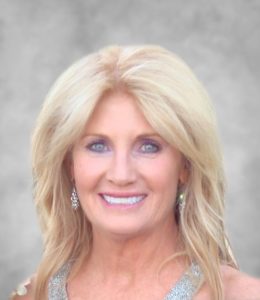“The hallmark of a competitor is their intensity, relaxation and calmness,” said Frampton.
Frampton, director of racquets at the north Scottsdale Terravita community, breaks it down like this: In any game, any match, any set, the time spent actually playing the game is only about 25%. Thus, he created his Mental Toughness Workshop to train players for the other 75%.
Winners, he says, are determined by how well they handle adversity. In fact, they thrive on it. “The difference between the Top 10 tennis players and everybody else is that they are more mentally tough.”
And this, he says, can be applied to other areas as well. So, if mental toughness is a key determiner of a positive outcome and thriving on adversity is part of the formula, Frampton poses this question to his workshop participants: “How do we learn to love the battle?”
The answer is in our brains, including the superpowers of rituals, rhythm and rest.
Rituals
We all have them, and whether we know it or not, they are important for setting us up for the day, preparing us for a big moment and even settling us down for sleep. This became painfully clear recently when I headed for the kitchen to make coffee. My morning routine involves the perfect latte with just the right amount of steamed vanilla-flavored cream crowned with exquisitely fluffed foam. But in the Zen-like moment of my deeply ingrained ritual, the electricity turned off. I can still hear the click followed by silence after pressing the button on my Nespresso. In that moment, all the subtle humming of machines that make my world right stopped at 5:51 a.m. I was momentarily stunned. Without my morning ritual, I was stuck. I could not think of what to do next.
In tennis, the mentally tough have their rituals, too – they examine their racket in between points, bounce the ball before a serve, tug on their clothes or touch their face. Rafael Nadal is famous for his rituals. He tucks his hair behind his ear, pulls on his nose, adjusts his shorts and bounces the ball – perhaps 17 times – before he serves. He says it puts him in the right frame of mind. “When I do these things, it means I am focused,” Nadal is quoted as saying in an Essentially Sports article by Varun Khanna. “It’s a way of placing myself in a match.”
Rhythm
Watching a new-to-tennis player reminds me of watching my grandson, Jackson, learn to walk. It’s awkward, sloppy and kind of funny and sweet. We’re not born with great rhythm; we have to work at it by practicing. To make this point, Frampton showed a video of a player who was out of sync with his rhythm. There seemed to be a disconnect between his arms and the rest of his body. He was jerky and his energy wasn’t centrally harnessed – it was all over the place. He appeared distracted and frustrated.
Just as dancers practice by counting their steps out loud, Frampton trains tennis players to give auditory cues, which create rhythm for breathing and action. In preparation for a ground shot, for example, he asks players to say the word “bounce” as the advancing ball hits the court, then “yessss” as the racket makes contact. The body responds by setting up for the shot with “bounce” and executing with “yessss,” which also triggers the body to exhale. It’s a dance.
Rest
I think we can all agree, it’s difficult to create a relaxed climate of calm and control, which Frampton says is the goal for optimal performance, when our hands are tightly gripping something like a tennis racket or a coffee mug. He wants his players to “dissolve the tightness.” Here’s his measure: “If a strong handshake is a 5, the ideal tennis grip is a 3.”
If you think about it, that’s probably the way you perform at your best, too. Creating a relaxed climate doesn’t mean you are not intensely focused. But it does mean you are in for the long game – you’re not going to burn yourself out, get tennis elbow or make your head hurt.
In between plays, he wants players to switch the racket to their non-dominant hand. It gives those hard-working muscles a break, a moment of rest, a mini vacation. Similarly, when we are struggling to solve a problem and scrunching up our face to force an answer, that’s a good time to relax and give our mental and physical muscles a break.
Leadership and performance experts are big on breaks – take a walk, do some pushups, play with your dog, meditate or go to sleep already. How many times have the answers come to us while we aren’t thinking about them? Similarly, walking away from the game, or the computer, for a while can make us a better performer.
“The hallmark of a competitor is their intensity, relaxation and calmness,” said Frampton. Mental toughness is the game changer, which we can build through rituals, rhythm and rest, and also with some packets of Starbucks Via Instant French Roast and a propane grill for boiling water in a power outage. QCBN
By Bonnie Stevens
Bonnie Stevens is a public relations consultant. She can be reached at bonnie.stevens@gmail.com.







